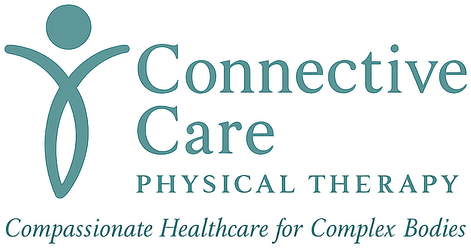Why Pacing Isn’t Lazy: A PT’s Perspective
If you’ve ever had to cancel plans, take a mid-day nap, or stop halfway through a task because your body said “nope” — and then felt guilty for it — this post is for you.
Pacing is often misunderstood. In a world that values productivity and grit, choosing to slow down can look like weakness. But for people with chronic pain, fatigue, hypermobility, or nervous system dysregulation, pacing isn’t avoidance.
It’s a strategy. A skill. A form of self-respect.
What is pacing?
Pacing is the intentional practice of managing your energy and physical effort to avoid symptom flares. That might mean taking breaks before you're tired, splitting tasks across days, or using tools like timers and checklists to prevent overexertion.
It’s especially helpful for people dealing with:
Post-exertional malaise (PEM)
Chronic fatigue syndrome (ME/CFS)
Ehlers-Danlos Syndrome
Fibromyalgia
POTS or autonomic instability
Pain flares after seemingly minor effort
Why is pacing hard?
Because most of us were taught to ignore our bodies.
Push through. Suck it up. Rest only when you’ve earned it.
That mindset doesn’t work for people with complex health conditions — and continuing to follow it often leads to more crashes, longer recoveries, and internalized shame.
Pacing asks us to listen to our bodies before they shout. It requires trust. And that’s a big shift.
What pacing is not…
It’s not “giving up”
It’s not being lazy
It’s not fear-based avoidance
It’s not just resting all day
Pacing is about finding a rhythm your body can handle — even if that looks very different from what others can do.
How I help patients learn to pace
In physical therapy, I often use pacing alongside:
Heart rate monitoring for POTS/dysautonomia
Activity journals to track patterns
Gentle exposure to movement with built-in rest
Proprioceptive training to reduce energy leaks
Nervous system regulation to reduce overactivation
I also teach how to defend your boundaries — even when others don’t understand why you can’t do “just one more thing.”
You don’t need to earn rest.
Rest is productive.
Rest is protective.
Rest is wise.
Pacing isn’t about doing less forever — it’s about doing things differently so your body can do more, safely, over time.
Want to explore pacing with a PT who gets it?
[Give us a call at (631) 448-3764 or email at diana@connectivecarept.com]

